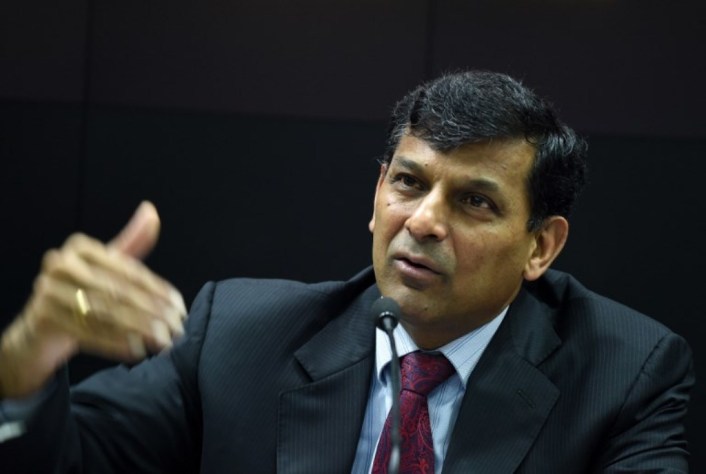(ATF) Having seen its worst contraction in decades with gross domestic product (GDP) shrinking by a record 23.9% in the April to June quarter, and with “little meaningful measures” to cushion the fall, the Indian economy is heading for a crisis, experts have said.
Worse, there’s no light at the end of the tunnel.
Disappointed by the inaction of India’s bureaucracy following recent announcements of stimulus measures, former Reserve Bank of India (RB) Governor Raghuram Rajan termed the fall alarming in a LinkedIn post yesterday. He called for the bureaucracy to come out of its complacency.
The crisis requires a more thoughtful and active government, which he said seems to have retreated into a shell after an initial burst of activity.
“The sharp decline in economic growth should alarm us all,” Rajan wrote. “The 23.9% contraction in India (and the numbers will probably be worse when we get estimates of the damage in the informal sector) compares with a drop of 12.4% in Italy and 9.5% in the United States, two of the most COVID-19-affected advanced countries.”
Rajan further said the bureaucracy needs to be “frightened out of its complacency and into meaningful activity. If there is a silver lining in the awful GDP numbers, hopefully it is that”.
READ MORE: Goldman Sachs sees contraction of Indian economy
Rajan, a professor at the University of Chicago, said the COVID-19 pandemic is still raging in India, so discretionary spending, especially on high-contact services like restaurants, and the associated employment, will stay low until the virus is contained. The eminent economist pointed out that the government’s reluctance to do more today seems partly because it wants to conserve resources for a possible future stimulus.
“This strategy is self-defeating,” he remarked. Citing an example, Rajan said if one thinks of the economy as a patient, relief is the sustenance the patient needs while on the sickbed and fighting the disease. “Without relief, households skip meals, pull their children out of school and send them to work or beg, pledge their gold to borrow, let EMIs and rent arrears pile up,” he noted.
Economy an “atrophied patient”
Rajan also said that the stimuli announced so far is hardly enough to revive the economy. “When the disease is vanquished, it can help the patient get out of her sickbed faster. But if the patient has atrophied, stimulus will have little effect,” he said.
According to Rajan the recent pick-up seen in a few sectors, including auto making, is not evidence of the much-awaited V-shaped recovery. “It reflects pent-up demand, which will fade as we go down to the true level of demand in the damaged, partially-functioning, economy,” he said.
In May, Prime Minister Narendra Modi announced a much-awaited $2.7bn stimulus package – or nearly 10% of India’s GDP – to spur domestic consumption and demand. Just before that, the RBI also made a number of announcements and lowered interest rates, to unclog credit flow.
But Rajan said the government will have to expand resources to “envelope every way possible, and spend as cleverly as possible”.
“All this requires a more thoughtful and active government. Unfortunately, after an initial burst of activity, it seems to have retreated into a shell,” he said.
READ MORE: India’s central bank to pay $7.6bn to government
Noting that India needs strong growth, not just to satisfy the aspirations of the country’s youth but to keep its unfriendly neighbours at bay, Rajan said temporary half-baked reforms – such as the recent suspension of labour protection laws in a number of states – will do little to enthuse industry or workers, and give reforms a bad name. He also suggested that reforms can be a form of stimulus, and even if not carried out immediately, a timeline to undertake them can boost investor sentiment.
The GDP contraction in the world’s fifth-largest economy is compared with 3.1% growth in the preceding March quarter and 5.2% expansion in the same period a year back. This is the sharpest contraction since India began publishing quarterly figures in 1996 and worse than what was expected by most analysts.
The Indian economy was in a troubled state when the pandemic hit this year; real GDP growth had moderated from 7% in 2017-18 to 6.1% in 2018-19 and 4.2% in 2019-20.
Worst is not over
Meanwhile, according to other experts, having witnessed its worst fall, the GDP is now estimated to contract even more in financial year 2020-21.
In a report released last week, the country’s largest lender, the State Bank of India said that the annual GDP contraction, which was estimated at 6.8% previously, could now contract 10.9%.
That’s because the pandemic had not made many inroads into the rural sector. However, the following quarters could be different as coronavirus spreads its tentacles into rural parts of the country.
In another report released Sunday, analyst firm CLSA predicted India’s GDP may fall as much as 15% year-on-year by the end of financial year in March 2021.
That implies a more than $600 billion miss in the 2021 fiscal year’s nominal GDP, CLSA added.
- With reporting by PTI






















